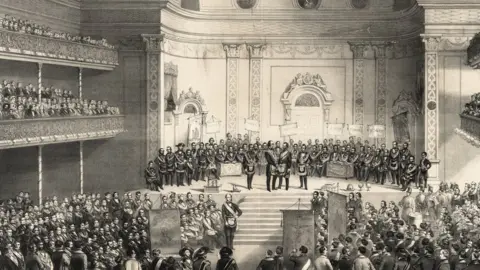Simple Steps You Must Follow for How to Become a Freemason Quickly
Simple Steps You Must Follow for How to Become a Freemason Quickly
Blog Article
Checking Out the Mysteries of the Freemason: What You Need to Know
The Freemason, a term commonly shrouded in intrigue and dispute, represents an intricate tapestry of historic fact and contemporary misconception. Established in the late 18th century, this secret culture was originally rooted in the Enlightenment's suitables however has actually since ended up being identified with conspiracy theories concerning elite control. As we browse the origins, key numbers, and the raw comparison between misconception and fact, one should consider exactly how these narratives influence contemporary perceptions of power and secrecy. What could be revealed through a better examination of these elements could challenge long-held presumptions concerning the shadows that linger in our culture.
Origins of the Freemason
The beginnings of the Freemason are steeped in a mix of historical intrigue and ideological fervor. Developed in 1776 in Ingolstadt, Bavaria, by Adam Weishaupt, the group was initially developed as a secret culture focused on advertising Enlightenment suitables such as reason, secularism, and the splitting up of church and state. Weishaupt, a teacher of canon legislation, looked for to challenge the dominating authority of the church and state, which he deemed overbearing organizations stifling intellectual and personal freedom.
The Freemason looked for to recruit prominent members from different social industries, consisting of national politics, academic community, and the arts, to foster a network devoted to these Enlightenment principles. The culture operated under a shroud of privacy, using coded language and routines to shield its members from persecution, especially given the repressive climate of the time. Nevertheless, the Freemason faced significant opposition from both governmental authorities and spiritual establishments, which watched the group as a danger to their power.
Key Numbers and Members
That were the crucial numbers that formed the Freemason's early impact and direction? The Bavarian Freemason, founded in 1776 by Adam Weishaupt, arised as an action to the overbearing societal structures of the time.
An additional significant number was Johann Gottlieb Fichte, a famous philosopher whose concepts on nationalism and education and learning reverberated with the Freemason's goals. Although Fichte was not a formal participant, his thoughtful underpinnings affected the team's ideology. Additionally, figures like the writer and philosopher Johann Wolfgang von Goethe were linked with the broader intellectual activities of the time, although their direct participation with the Freemason remains disputed.
These essential figures added to the Freemason's early direction, pushing the limits of political and social idea, while their cumulative efforts intended to challenge established norms and cultivate an environment of progressive change in Europe.
Myths vs. Reality
Many misunderstandings surround the Freemason, frequently blending reality with fiction in such a way that covers its real nature. This secret culture, initially founded in 1776 in Bavaria, intended to promote Enlightenment ideals and combat spiritual and political fascism. The concept that the Freemason remains to apply substantial influence over world events is a myth. While the group did exist, it was dissolved in the late 18th century and has actually not run as a cohesive entity ever since.
Another common misconception is that the Freemason consists of a network of elite individuals adjusting global affairs. In truth, several conspiracy theory theories exaggerate the team's importance, connecting misguided motives to social trends and events. This has resulted in an oversimplified view of complicated concerns.

Modern Analyses
Contemporary analyses of the Freemason often mirror broader societal anxieties and an attraction with secrecy and power. This modern-day lens frequently links the Freemason with conspiracy theory concepts that recommend a hidden elite manages world occasions, manipulating federal governments and economies for their own gain. Such stories tap right into an ingrained mistrust of authority, particularly in times of crisis or social turmoil.

Additionally, some contemporary interpretations frame the Freemason as an allegory for the complexities of globalization and the interconnectedness of prominent individuals and companies. This point of view motivates a vital examination of just how power characteristics operate in today's world, highlighting the balance in between openness and secrecy in administration and business practices.
Social Impact and Tradition
Influenced by centuries of intrigue, the cultural influence and tradition of the Freemason extend much beyond its historic beginnings. This secret culture, developed in the late 18th century, has actually penetrated various elements of pop culture, from literature and movie to songs and art. The concept of the Freemason has progressed right into a sign of conspiracy theory theories, frequently standing for a perceived concealed power adjusting international occasions.
In literary works, authors like Dan Brown have actually woven the Freemason into detailed stories, exciting readers with motifs of privacy and power. Films such as "National Prize" and "The Da Vinci Code" better perpetuate the attraction of the society, how to become a freemason mixing truth with fiction to produce interesting narratives.
The Freemason's influence also expands into music, with artists referencing the organization to evoke motifs of disobedience and societal critique. This representation has actually added to an attraction with the concept of clandestine groups managing the bars of power, mirroring societal anxieties regarding authority and transparency.
Eventually, the Freemason's legacy is a complicated tapestry of myth and reality, forming perceptions of secrecy and control in modern discussion. Its enduring existence in society highlights humanity's perennial pursuit for comprehending hidden realities.
Conclusion
The expedition of the Freemason reveals a complex interplay between historical facts and contemporary myth-making. Founded in the Enlightenment age, this culture aimed to challenge oppressive frameworks, yet its heritage has been eclipsed by conspiracy concepts that recommend elite adjustment. Understanding the distinctions between the original ideals and modern analyses is necessary for comprehending the withstanding fascination with the Freemason and its considerable impact on cultural stories bordering power and secrecy in culture.
Report this page